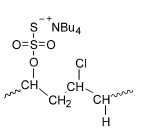Medical device coating

Our client requested a novel coating for a medical device of their manufacturing. Device top layer was made from Poly Propylene and they requested the formulation of a coating that would exhibit specific thermal, mechanical, chemical and optical properties. Among these properties the most important ones were:
- Bio compatibility
- Non toxicity
- Non leaching
- Thermal resistance at temperatures as high as 150C
- Resistance to sterilization cleaning
- Resistance to cleaning with chemicals
- Improved life cycle
- No degradation for at least 200 uses
- No obvious color loss or crack propagation for at least 200 uses
This first part of the current project investigates known solutions and applications for biomedical coatings and coatings for medical devices. Such coatings come in contact with tissue, blood, membranes or combinations of them and their inertness and biocompatibility is the single most important attribute of theirs. Client has specified requirements for a desired coating that is to be identified and optimized for the intended use. This first part identifies polymers and approaches that have been used in applications with shared characteristics and requirements in order to initiate an optimization procedure of the most promising solutions.
Biocompatible coatings and coatings of medical devices
Medical devices require coatings that either are inert and they do not pose a threat to human health or coatings that are designed for controlled release of bio compounds into blood, skin or tissues. Current projects requires a safe coating that can come in contact with mucosal membrane repeatedly without causing harm, allow for leakage, exhibit any obvious mechanical or chemical degradation and other requirements.
Such coatings have been based on natural and synthetic polymers and have been formulated either as homopolymers or copolymers. Some of the most popular choices that exhibit properties desired in this project include:
- PVC based polymers with various plasticizers and performance additives.
- Various poly urethanes
- 100% natural based coatings mostly based on cellulose, chitin, chitosan and other similar biocompatible, bio degradable polymers
- PP based coatings
Our work resulted to the creation of a coating suitable to the client’s needs at a stage following research and simulation [computational chemistry and CFD].
